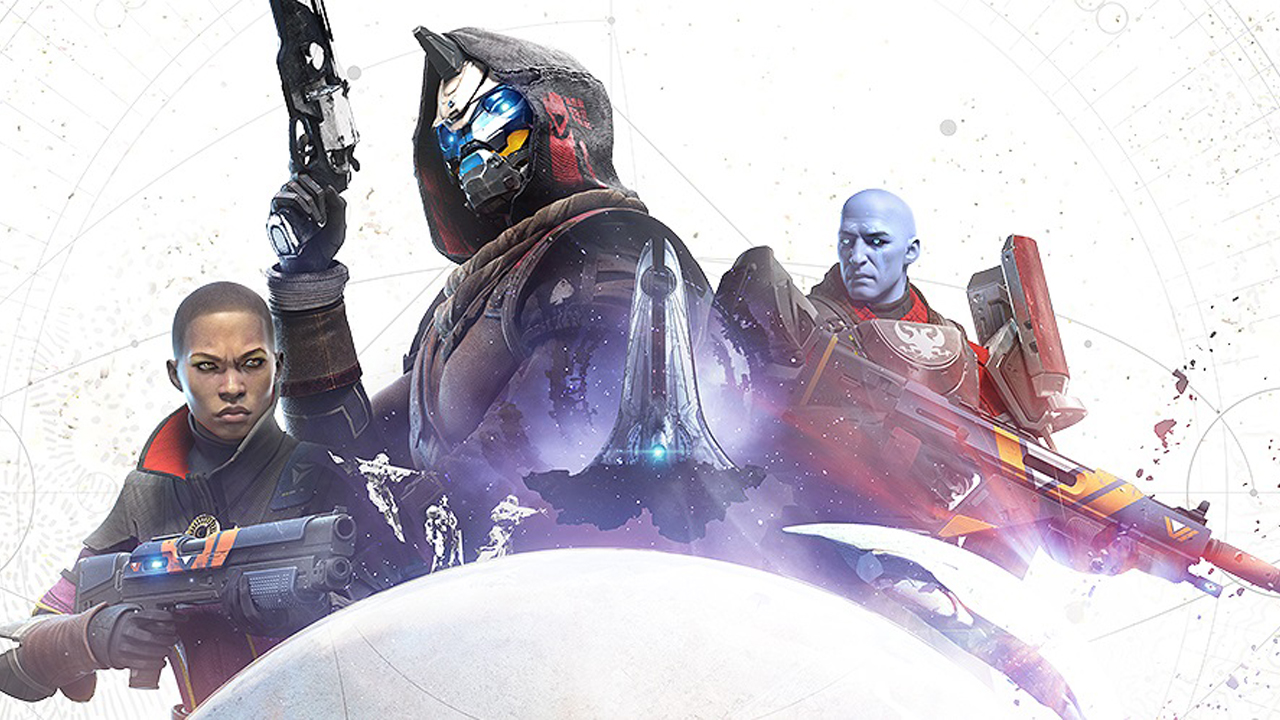Instead of building Destiny 3, Bungie is making Destiny 2 the all-encompassing MMO it's wanted for years
It won't be Destiny 3 but it won't be Destiny 2 as we know it, either

Bungie showed a lot of its hand at its June 9 presentation – which you can catch up on here – and all of it sends one clear message: Destiny 2 isn't going anywhere, but it is going to change dramatically. Bungie isn't interested in starting over and making Destiny 3, but neither is it content with the current trajectory of Destiny 2. So instead of continually expanding, Bungie is ripping out and replacing entire chunks of the game, both to streamline Destiny 2's world and to make room for new and returning content.
This is all driven by the Destiny Content Vault, which was quietly the biggest announcement in Bungie's show, even beating out a trilogy of expansions running through 2022. Every fall, Bungie will use the DCV to remove "stuff that is getting a little long in the tooth that you're not really looking at and playing anymore," as director Luke Smith put it. For Year 4, that means Io, Titan, Mars, Mercury, and the Leviathan, as well as all activities associated with those destinations, are being vaulted. In their place, we're getting a new destination on Europa and a returning destination from Destiny 1 – the Cosmodrome. The original Vault of Glass raid will also launch in Destiny 2 later in Year 4 alongside three old-school strikes.
Now that's what I call Destiny

General manager Mark Noseworthy described this process as assembling "the greatest hits of Destiny" while updating those activities for modern standards and systems. Instead of tacking on another expansion every fall – bloating the game further in the process – Bungie will now curate Destiny 2's content every year through a mix of content from the latest expansion, base content from Destiny 2, and cool stuff from Destiny 1.
"We left all that behind when we made Destiny 2 and we don't want to do that again," Noseworthy says of the original Destiny content left by the wayside back in 2017. "So let's not do that again, but let's also reach into the past and bring it into the present."
"We don't want to start over from scratch and build a sequel," Smith adds. "In order to make a sequel, we'd have to stop supporting Destiny 2."
Bungie's plans for the Destiny franchise have changed over the years, but I can't help but see Destiny 1 in these sentiments. I don't know the specifics of the studio's internal discussions, but I do know that these decisions – not abandoning existing content, and instead committing to the game it has already poured so much time, testing, and attention into – could easily have been applied to the original Destiny, and Bungie's often painful transition to Destiny 2.

I also have no doubt that this was a major factor in Bungie's split from Activision, as the pair's original contract would probably have them finalizing Destiny 3 right about now, with Destiny 4 to arrive around the time of the Lightfall expansion in 2022. Hell, it may have been Bungie's primary motivation. In any case, we're definitely seeing the results of that split now. It's easy to point to creative or monetization differences and attribute them to Activision's influence, but I'd bet it's this kind of ground-up change that Bungie had in mind when it became independent in 2019. The Destiny Content Vault would never have been feasible under Activision's oversight – simply because it wouldn't fit with the publisher's schedule for standalone, numbered releases – and now it's become the central pillar for Bungie's long-term goals for Destiny as a franchise.
Weekly digests, tales from the communities you love, and more
A new game in all but name
The Beyond Light trilogy confirms that Destiny 2 will continue its pattern of fall expansions for years to come, and the Year 4 season pass suggests that Bungie's between-expansion plans aren't changing much either – at least on a structural level. One expansion, four seasons a year, three months apiece. That's staying. But now each year will start with a huge shift in overall content, and if the Year 4 vaulting is anything to go by, we'll see the volume of vanilla Destiny 2 content decrease over time.

Half of Destiny 2's launch destinations and its first two DLC destinations are going away in just a few months, as are all Year 1 raids. The Year 4 map coming this September will consist of two vanilla destinations, three old DLC destinations, one new DLC destination, and one destination from the Destiny 1 vault. It's a gigantic difference with far-reaching implications for campaigns, the new player experience, end-game diversity and more. We'll dig into the specifics of all that in the months ahead as Bungie releases more information on the DCV, but the fact remains that Destiny 2 is becoming less of a standalone game and more of a hub for a broader collection of content that Bungie will showcase each year.
Destiny 3 isn't actually happening. Players won't have to leave their characters or vaults behind, and Bungie won't have to create bespoke systems and mechanics to support a new numbered entry to the series. But if it's adding content in these new expansions that would've been in Destiny 3, reviving content from Destiny 1, and removing content from Destiny 2 to free up space, it's effectively Frankensteined a new game together anyway. It won't be a sequel in the traditional sense and it won't be Destiny 2 as we know it, either. It'll just be… Destiny. It'll be the singular, evolving, future-proof game that Bungie has seemingly always wanted to make. It'll just happen to have an increasingly pointless two on the end.

Removing so much content at once will undoubtedly create some issues down the line, but I'm incredibly eager to see what Bungie does with the Destiny Content Vault. Will we ever see landmark releases like Forsaken rotate out in Year 5 and beyond? Likewise, will Destiny 1 icons like the Dreadnaught ever be unvaulted? Could future events somehow drive us to leave Earth behind for a year? Bungie says it will update and reintroduce the content it removes, which makes me wonder when vaulted destinations like Mars and Titan will rotate back in, and what they'll look like when they do.
Especially after the lackluster events of Year 3, I'm ready for a continental shift like this, and I'll gladly trade old stuff that I never touch for new stuff I've never seen, not to mention old-school activities I dearly miss. It may not be the most elegant solution to Destiny 2's problem with content rot – especially with regards to removing old raids – but I'll be damned if it ain't an eye-catching solution. It will not only reshape how we think about Destiny 2 expansions, but also bring the game more in line with the original vision that Bungie shared way back at E3 2013. And after six years of writing about Destiny, devouring the expansions, pushing through the seasonal droughts, and struggling to decipher backward decisions, that excites me more than anything else Bungie has announced.

Austin has been a game journalist for 12 years, having freelanced for the likes of PC Gamer, Eurogamer, IGN, Sports Illustrated, and more while finishing his journalism degree. He's been with GamesRadar+ since 2019. They've yet to realize his position is a cover for his career-spanning Destiny column, and he's kept the ruse going with a lot of news and the occasional feature, all while playing as many roguelikes as possible.


